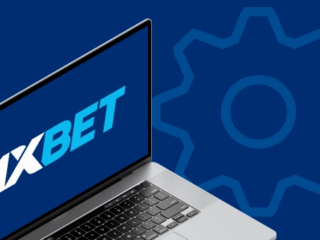
Imagine it’s your busiest Saturday: customers line up at your Bakersfield retail store, but your point-of-sale system freezes. Or, you’re trying to finalize a critical agricultural shipment, and your server crashes, making essential data completely inaccessible. These moments aren’t just frustrating; they’re costly.
These sudden crises are often just the tip of the iceberg. The real damage comes from the hidden, daily frustrations—the slow network, the buggy software, the constant worry about security. These aren’t minor glitches. They are a silent drain on your resources, productivity, and growth, a common reality for many local business owners.
These daily tech issues, security worries, and system slowdowns are more than just annoyances; they are symptoms of a reactive, ‘break-fix’ IT model that stifles growth. The key to getting ahead is shifting to a proactive approach. Investing in strategic Bakersfield managed IT services helps you anticipate problems before they happen, turning your technology from a liability into a competitive asset.
In this guide, we’ll break down the three biggest technology headaches holding Bakersfield businesses back and give you a clear, actionable plan to solve them for good.
Headache #1: The Productivity Drain of Outdated & Disconnected Systems
Does your team complain about slow computers or frequent software crashes? This isn’t just background noise; it’s the sound of your business losing momentum. Aging hardware, outdated software, and systems that don’t communicate with each other create daily bottlenecks that add up to significant wasted time and missed opportunities.
Symptom 1: Constant Downtime
Frequent system crashes, slow networks, and software glitches are often caused by obsolete hardware struggling to run modern applications or unpatched software bugs that leave your systems vulnerable and unstable. Every minute your team waits for a system to reboot is a minute they aren’t serving customers or moving a project forward.
Symptom 2: Data Silos & Inefficiency
When your key systems—like your CRM, accounting software, and inventory management—don’t integrate, you create data silos. This leads to the frustrating and error-prone task of manual data entry, duplicate efforts, and a lack of real-time insights needed to make smart business decisions.
The Solution: A Unified, Modern Technology Strategy
- Step 1: Conduct a Comprehensive Technology Audit. You can’t fix what you can’t see. The first step is getting a clear picture of all your current hardware, software, network infrastructure, and critical data flows to identify the weakest links.
- Step 2: Prioritize Strategic Upgrades & Integration. Focus on modernizing mission-critical systems first. Ensure any new components you invest in can integrate seamlessly with your existing technology to break down those data silos.
- Step 3: Embrace Smart Cloud Integration. Moving appropriate services to the cloud, such as using Office 365 for collaboration and data storage, can unify disparate systems. It improves access for your team, enhances collaboration, and ultimately boosts productivity from anywhere.
Headache #2: Escalating Cybersecurity Threats That Target Main Street, Not Wall Street
Many small business owners operate under the dangerous misconception that cybercriminals only target large corporations. The reality is the opposite. Small and medium-sized businesses (SMBs) are increasingly prime targets because they are perceived to have weaker defenses and hold valuable data.
Threats like phishing, ransomware, and business email compromise are designed to exploit human error and bypass basic security.
The Solution: Proactive Defense and a Bulletproof Recovery Plan
- Step 1: Build a Human Firewall through Ongoing Training. Your employees are your first and most important line of defense. Regular, engaging security awareness training empowers them to spot and report phishing attempts and other threats before they cause damage.
- Step 2: Implement Layered Security Measures. A single lock on your door isn’t enough, and the same is true for your digital assets. Implementing key security layers like Multi-Factor Authentication (MFA), advanced endpoint protection on all devices, robust firewalls, and secure network configurations creates a formidable defense.
- Step 3: Develop a Comprehensive Backup & Disaster Recovery Plan. This is your ultimate safety net. It’s not a matter of if a security incident will happen, but when. Secure, offsite, and regularly tested backups are essential to ensure you can restore your data quickly, minimize downtime, and get back to business without paying a ransom.
Headache #3: The AI & Automation Gap That Puts You a Step Behind
Many Bakersfield business owners know they should be leveraging artificial intelligence and automation, but the idea feels overwhelming. Common hurdles include a perceived lack of in-house expertise, fear of high upfront costs, and the challenge of having data that is too messy or disconnected to be useful. This leads to paralysis, leaving businesses at a competitive disadvantage as their peers pull ahead.
The Solution: Start Small, Scale Smart, Seek Guidance
- Step 1: Identify One Repetitive, Time-Consuming Process. Don’t try to automate your entire business at once. Start by identifying a single, high-frequency, low-complexity task that eats up your team’s time. This could be customer appointment scheduling, routine data entry between systems, or invoice processing.
- Step 2: Leverage Existing Tools & Integrations. You may already have powerful automation tools at your fingertips. Many modern business platforms, including Office 365, CRMs, and accounting software, have underutilized features that can connect systems and automate workflows without new software purchases.
- Step 3: Seek Strategic Technology Guidance. You don’t need to become an AI expert overnight. A strategic technology partner can help you identify the highest-impact automation opportunities, navigate the implementation process, and ensure your data is clean and ready for future AI initiatives.
From Tech Headaches to a True Competitive Advantage
The productivity drain from outdated systems, the constant threat of a cyberattack, and the fear of falling behind on automation are not isolated problems. They are all symptoms of a reactive IT approach that keeps your business in a constant state of putting out fires.
Moving to a proactive, strategic managed IT model isn’t just about “fixing” problems. It’s about transforming your technology from a frustrating burden into a powerful driver for efficiency, security, and sustained growth. It’s about giving your Bakersfield business the stable, secure, and modern foundation it needs to thrive.













